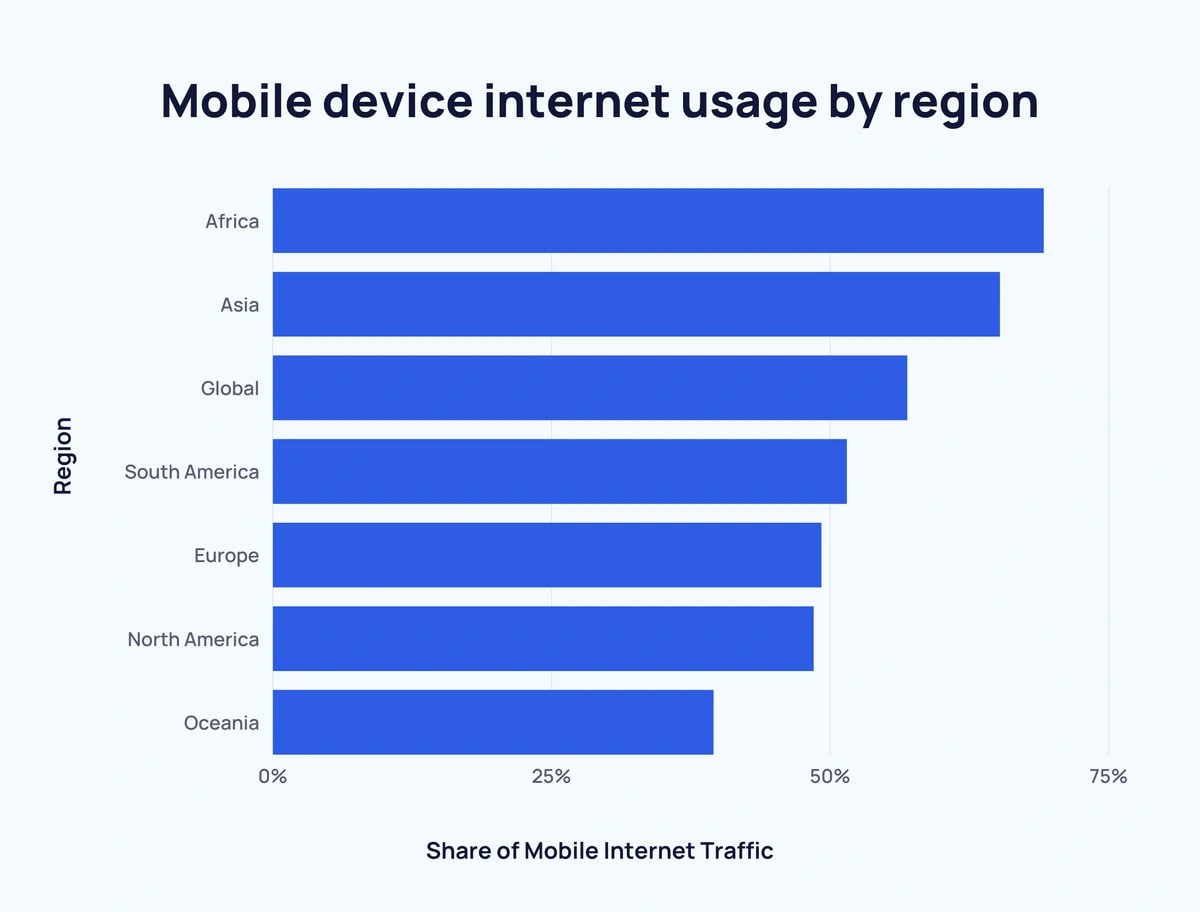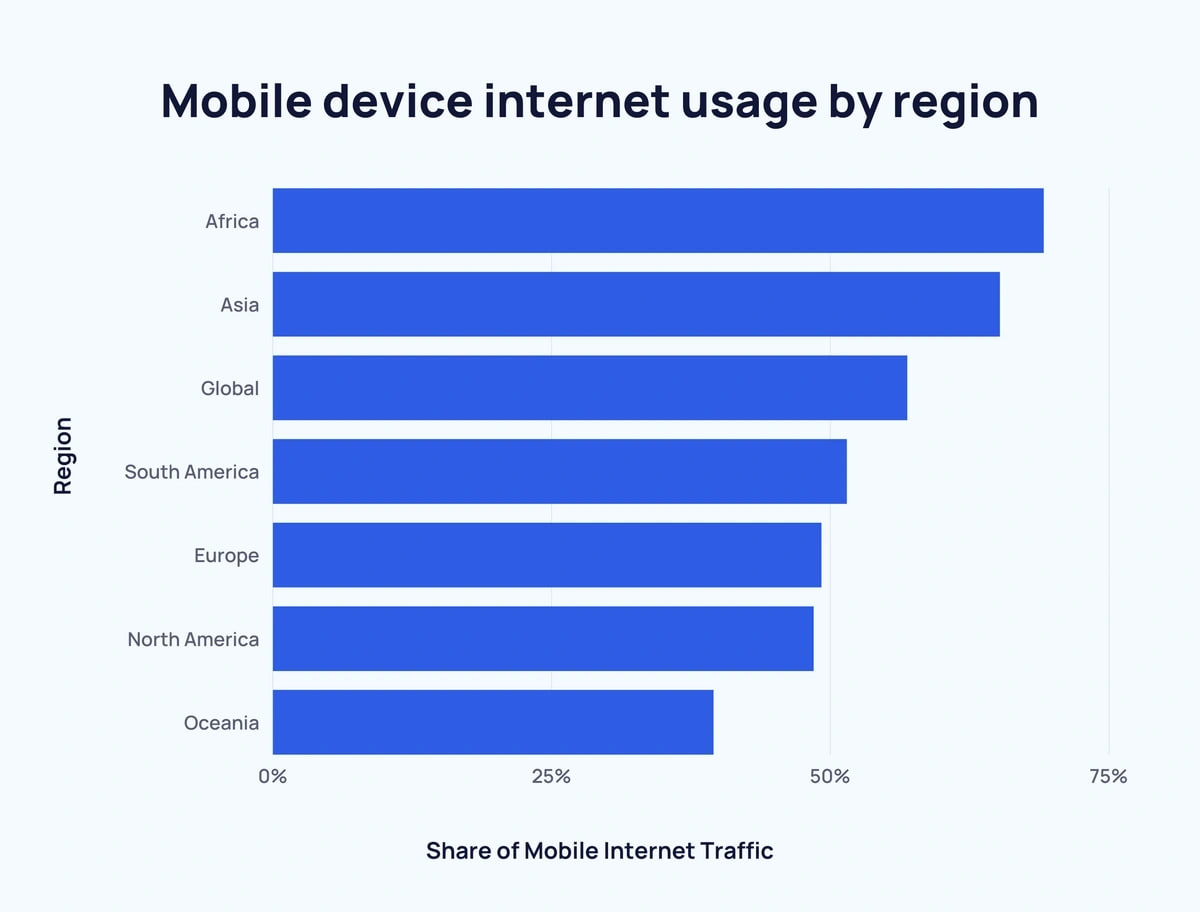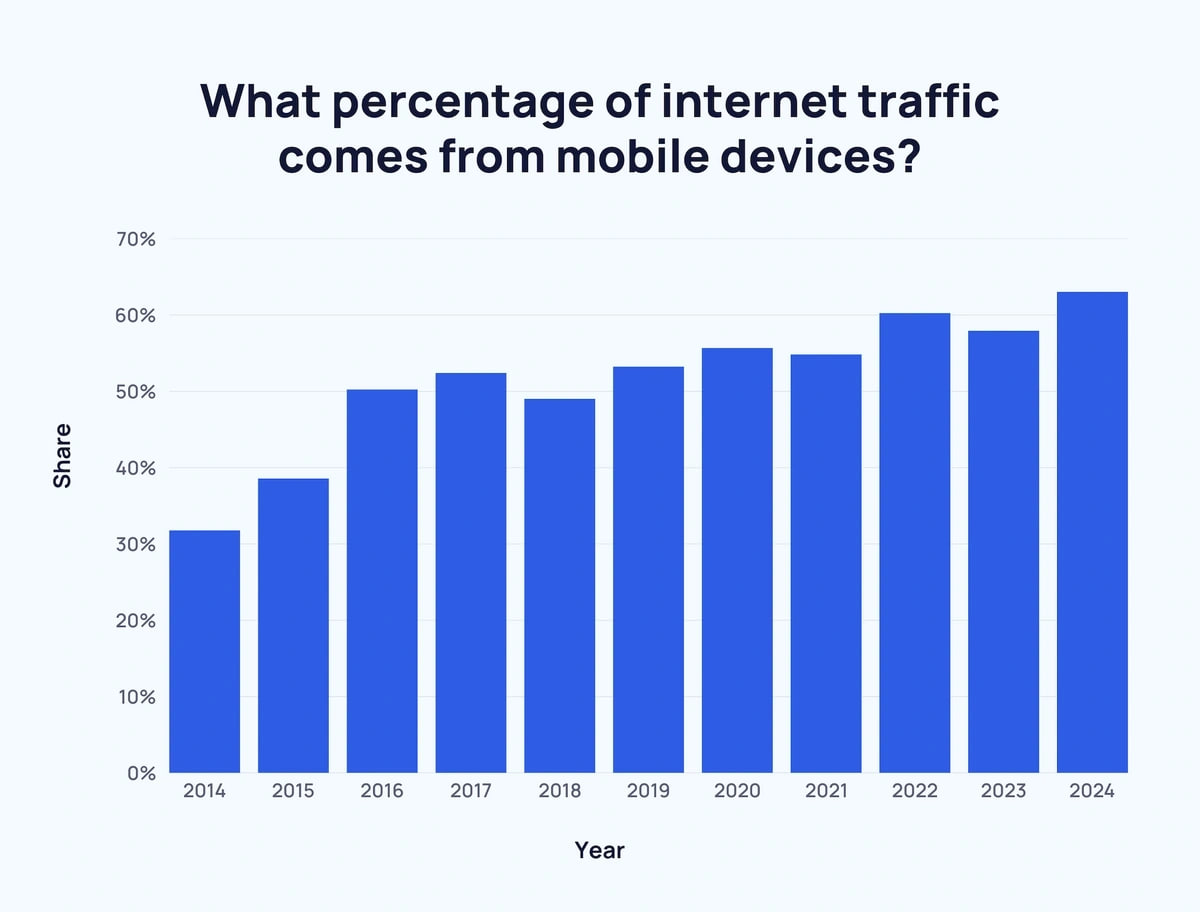Mobile traffic: why it already dominates and how to use it in arbitrage
Mobile traffic became dominant in the market a few years ago, and now its role is only growing. Let's figure out why mobile traffic is so important and why it dominates now.
Here is a simple but important fact: more than 60% of global traffic is phones. It is logical that this figure did not just fall from the sky - phones are convenient, mobile and affordable. The phone is always at hand, and even after 5 minutes of scrolling through the lakes you will have time to see several ads. And for us, as advertisers, this is, of course, a big plus. Phones have made these processes simply continuous - the client is always online, which means he is always buying.


What changes has this trend brought to the life of ordinary arbitrageurs?
First, everyone began to massively adapt their landing pages for mobile devices. UI/UX a few years ago often simply copied the desktop version, and if you remember what these sites looked like, you should understand how poor it was) Now for phones - a separate design, which cannot but please. In addition, the trend towards mobile traffic has forced programmers to work on optimization, because waiting more than 3 seconds for a site to load is now not patient for 90% of users.
Secondly, phone users make purchases more often than desktop users who are sitting in the same social networks. This is easily explained: simplicity and accessibility - you can make a purchase whenever you want, wherever you want and at any time, and not only when you are at your PC.
According to Google for 2024, 70% of purchases begin with mobile devices, even if the user completes the purchase via PC.

What also affects this factor is the development of AI. I think you have often noticed that, for example, Meta, after a conversation that the phone was able to "hear", where you expressed a desire to buy a certain product, IMMEDIATELY starts showing you advertisements for this product. This is how contextual advertising works. You yourself provided this access when you installed the application and thoughtlessly agreed to all the terms by clicking "Accept". So, it is in mobile traffic that such personalization is used, which makes this tool much more effective. In addition, everyone is on social networks through mobile devices, and not through a PC.
Okay, but how to work with this?
Often, only the design is adapted on the landing page, and not everyone thinks about a specific UI. The main thing: there should be a clear bold headline, a hook in the first seconds (hook), the CTA +- button should be immediately visible, because not everyone will scroll to the bottom.
Now mobile traffic absorbs everything, and new places for placement appear, where you need to be one of the first to fly to. I am sure that in the near future advertising will be integrated (param-pam-pam) - into the camera! Imagine: you are taking a picture of yourself, and an advertisement for the glasses you tried on 10 minutes ago already comes to you. This is already being tested in the Chinese e-commerce, TikTok. And advertising no longer looks like advertising - it looks like advice, like a hint.
This is not the future - it is happening now. The camera sees more than you think, bots (and Snowden says that not only) listen more attentively than your friends, and advertising does not knock on the door - it is already in the kitchen, pouring you tea and telling you what exactly to buy. Such are the realities.

Комментарии (0)
Читатели еще не оставили комментарии, будьте первым!